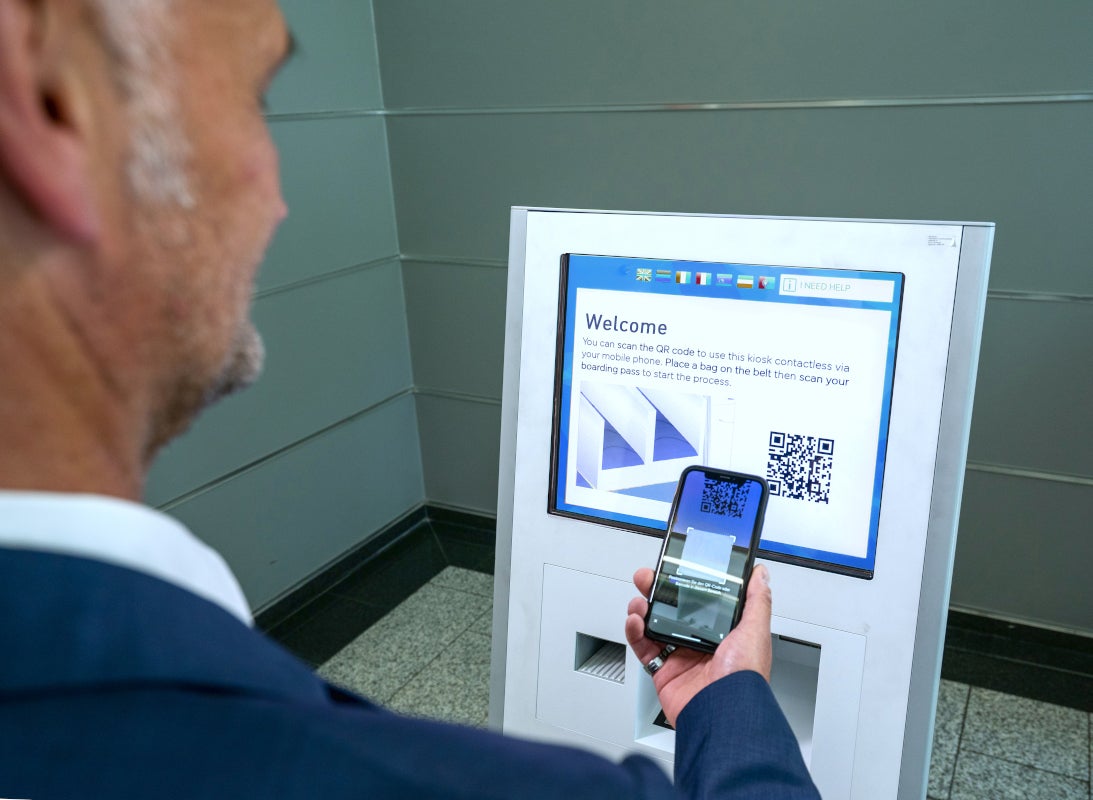
Globally almost all industries are suffering in this crisis. The aviation industry will need up to three years to recover from the shutdown. Airports and airlines need to react with new health and safety concepts. The challenges for airports are how to observe social distancing to prevent the spread of the virus and how to minimise the need to touch surfaces and reduce the risk of possible infection.
Statements by IATA and ACI are very clear: “Passengers need full trust on a healthy journey!” In order to restore their confidence, we need touchless touchpoints and assurance of safe distancing.
At airports, self-service options should be made available and utilised as much as possible to limit contact at all passenger touchpoints. Airlines should proactively guide passengers to self bag drop options to minimise the interactions between passengers and check-in agents.
A general move towards greater use of touchless technology and biometrics should also be pursued. The fewer passengers need to touch documents, kiosks and security points, the better we can protect them on the way to their planes. Self-service systems reduce queues in airport terminals, significantly decreasing the risk of infections. Self-service kiosks such as self bag drop devices (SBDs) already provide user interfaces which are fast and easy to use and they require minimal passenger interaction. However, they do require some touch screen contact to confirm details, accept the Dangerous Goods Regulations and to confirm receipt of the bag with a tag correctly affixed.
At Materna, we initially looked at the ‘obvious’ changes we could make – gesture sensors, voice control etc. However, all of these are far from elegant and would require hardware changes and re-certification. They might also confuse passengers. Our philosophy was to change as little as possible and keep the passenger experience almost the same. This was achieved by replicating the touch experience on the passenger’s own smartphone. In record time, our product and development teams have incorporated technology that will allow the passenger’s phone to easily access a website controlling our SBDs, meaning there is no need to use the SBD touchscreen: We call it: Touchless.Connect.
For passengers, this means their airport experience is just modified slightly. After scanning the QR code on the SBD kiosk, passengers can use the web-based application. They can easily control the kiosk via their smartphone and don’t need to touch the display. Result – a clean and reassuring experience for the traveller; for the airport, the use of self-service devices continues and no additional costs or time-consuming hardware modifications are required. With Touchless.Connect we help passengers to regain a bit of trust.
The benefits of Touchless.Connect are significant:
- No hardware modifications (or recertification) to SBDs
- No on-site installation required
- Remote installation
- Web browser-based, no extra app needed
- Suitable for Android, iOS and other OS
- Passenger process is not changed significantly
- Airline process is unchanged
- Passengers can use 4G or Wi-Fi – Bluetooth is not needed
- The solution adds value to the passenger experience

